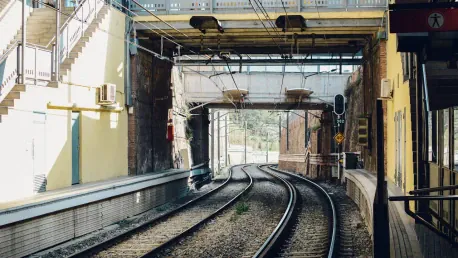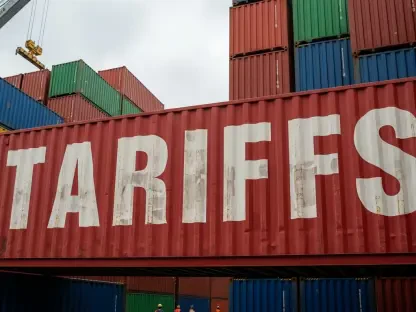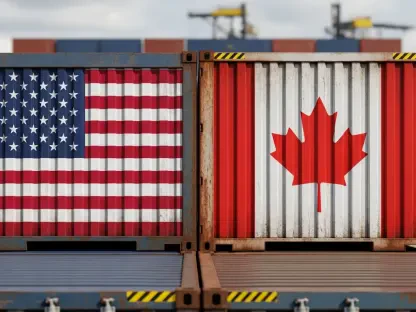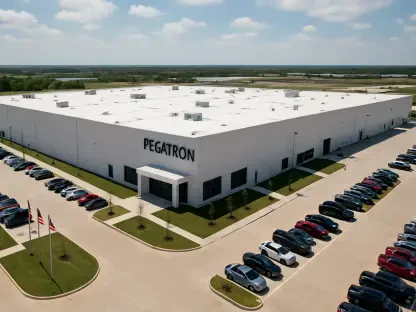The 2025 Annual Meeting of the Southwest Association of Rail Shippers (SWARS) convened in Dallas, with discussions involving Class I railroads, short lines, and industry stakeholders focusing on key issues like service optimization, technological adoption, and tariff impacts. The meeting highlighted the challenges posed by macroeconomic uncertainty, particularly the influence of tariffs on freight dynamics. These tariffs have driven changes in transloading trends, prompting pre-staging of goods such as plastics and steel. However, this pre-emptive stockpiling trend is already showing signs of slowing down.
Service Optimization Amid Challenging Market Conditions
Commitment to Consistent Service
Class I railroads like Union Pacific, along with short lines, reiterated their dedication to optimizing consistent service despite tough market conditions. They recognize that while shipper satisfaction has improved, it still lags behind that of trucking services, which are considered the industry benchmark. BNSF’s President and CEO Katie Farmer introduced an innovative service called Quantum, targeting high-cost-failure freight. This new offering aims to shift shipments from trucks to rail, presenting a significant opportunity for cost-saving and efficiency.
Nevertheless, CSX President and CEO Joe Hinrichs emphasized a different approach, focusing on stakeholder-centric strategies and a cultural shift within the railroad. By prioritizing service within operations, CSX aims to enhance overall efficiency and customer satisfaction. The emphasis on renewing commitment to consistent service underscores the rail industry’s understanding of its current limitations and the steps necessary to bridge the service gap compared to trucking.
Regulatory Outlook and Technological Advancements
On the regulatory front, there is an optimistic outlook with the new Federal Railroad Administration (FRA) leadership under Administrator David Fink. Railroads such as CSX and BNSF are looking forward to leveraging technological advancements to improve operational efficiency. Technologies such as AI for automating operational decisions are at the forefront of this strategy. By shifting resources from problem detection to problem-solving, these railroads anticipate significant improvements under the new regulatory environment.
The application of technology is expected to be a game-changer, facilitating better decision-making processes and enabling the rail industry to meet the evolving demands of shippers. The integration of AI and other advanced tech solutions is seen as an essential move for future readiness. Despite the current challenges, there is cautious optimism that regulatory support will contribute to substantial advancements in rail operations and service delivery.
Tariffs and Rail Equipment Demand
Impact of Tariffs on Freight Dynamics
One of the key topics at the SWARS meeting was the impact of tariffs on freight dynamics. These tariffs have led to significant planning challenges for shippers, railroads, and lessors. For instance, the anticipated cost fluctuations within a month for a particular railcar type—from $120,000 to $165,000, eventually settling just below $160,000—highlight the volatility caused by tariff changes. Such fluctuations make it difficult for stakeholders to plan effectively, further complicating the already challenging market conditions.
The influence of tariffs has also driven transloading trends, where goods like plastics and steel are pre-staged to mitigate potential disruptions. However, this trend of pre-emptive stockpiling is beginning to slow down, suggesting that stakeholders may need to adapt their strategies accordingly. The ongoing interplay between tariffs and freight dynamics will likely continue to be a focal point for the rail industry as it navigates these complex challenges.
Rail Equipment Demand Trends
The discussions also touched on the differing trends in rail equipment demand. While chemicals, a crucial customer segment for tank car manufacturers, exhibit strong core demand, other factors such as high interest rates and volatile railcar prices hinder growth in the build book. Projections indicate that around 35,000 railcar deliveries are expected in 2025, a decline from 42,500 in 2024. This decrease highlights the pressing need for strategic adjustments in the face of fluctuating market conditions.
Additionally, the industry is facing a significant number of railcars nearing end-of-life, with approximately 130,000 cars poised for retirement. This impending demand for new railcars further complicates the market dynamics. Stakeholders must navigate these challenges by finding ways to align supply with demand despite the pricing volatility and economic uncertainties.
Future Outlook and Industry Sentiments
Consistent Service and Technological Adoption
The comprehensive discussions at the SWARS meeting conveyed a broader industry consensus on the pressing need for consistent service improvement, the adoption of cutting-edge technologies, and the strategic navigation of tariff impacts. There is a collective acknowledgment that overcoming these challenges, particularly in achieving shipper satisfaction and managing equipment costs, is essential for the future success of the rail industry.
The emphasis on technology is pivotal, as railroads strive to implement advanced systems that enhance efficiency and service delivery. The cautious optimism expressed by industry leaders reflects a belief that the rail sector can achieve substantial progress with supportive regulatory backing and continuous innovation. The alignment of technology with operational goals remains a critical focus area moving forward.
Strategic Adaptations for Future Resilience
The 2025 Annual Meeting of the Southwest Association of Rail Shippers (SWARS) was held in Dallas, bringing together participants from Class I railroads, short lines, and various industry stakeholders. The discussions centered on critical topics such as enhancing service efficiency, embracing new technologies, and the impacts of tariffs. Tariffs and macroeconomic uncertainties have significantly influenced freight transportation patterns. These pressures have particularly affected the dynamics of transloading, leading to a noticeable trend in the pre-staging of materials like plastics and steel. However, this trend of stockpiling goods ahead of actual demand is showing signs of deceleration. The meeting underscored the need for industry adaptability to evolving market conditions and the importance of innovation in addressing these challenges. Stakeholders were urged to focus on flexibility and technological advancements to maintain their competitive edge in an unpredictable economic environment.









